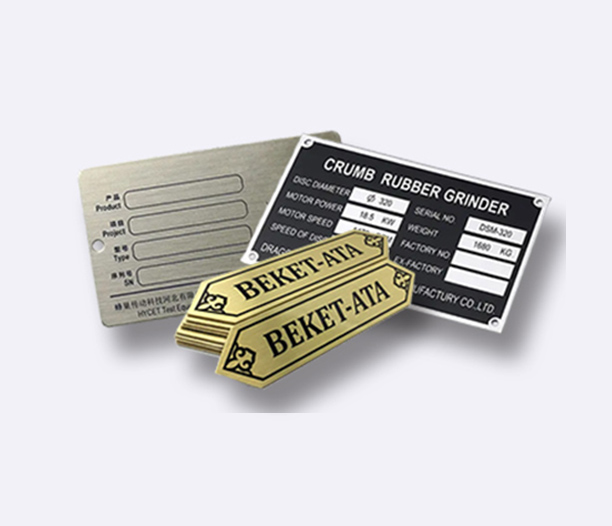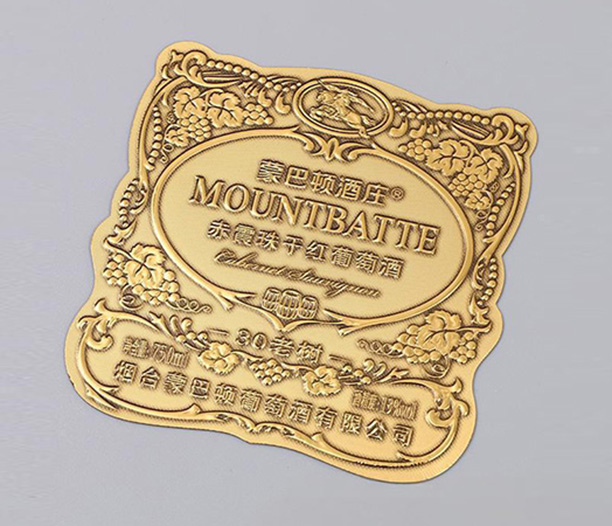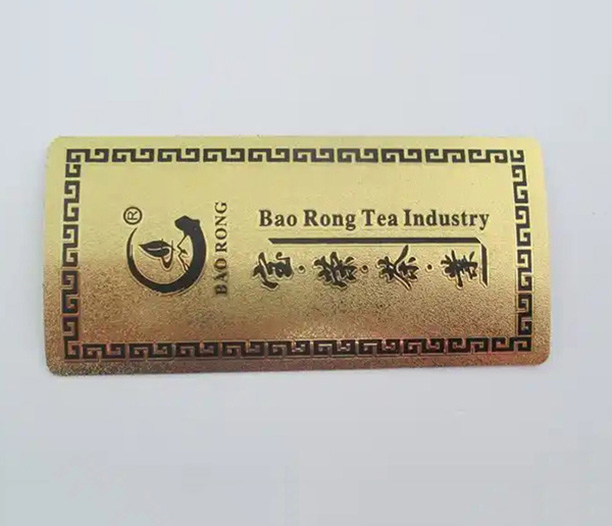In the intricate network of pipes that snake through industrial plants, commercial buildings, hospitals, laboratories, and even utility corridors, pipework identification labels are far more than simple stickers. They are the silent communicators, the vital safety sentinels, and the cornerstone of efficient operations. Failure to properly identify pipe contents and flow direction isn't just inconvenient; it can lead to catastrophic accidents, costly downtime, regulatory fines, and environmental damage. Implementing a robust, standardized system using pipework identification labels is not optional – it's an absolute necessity for safety, compliance, and operational excellence.
This comprehensive guide dives deep into the world of pipework identification labels, exploring their critical functions, the standards governing them, the essential components they contain, best practices for implementation, and the tangible benefits they deliver across numerous industries.
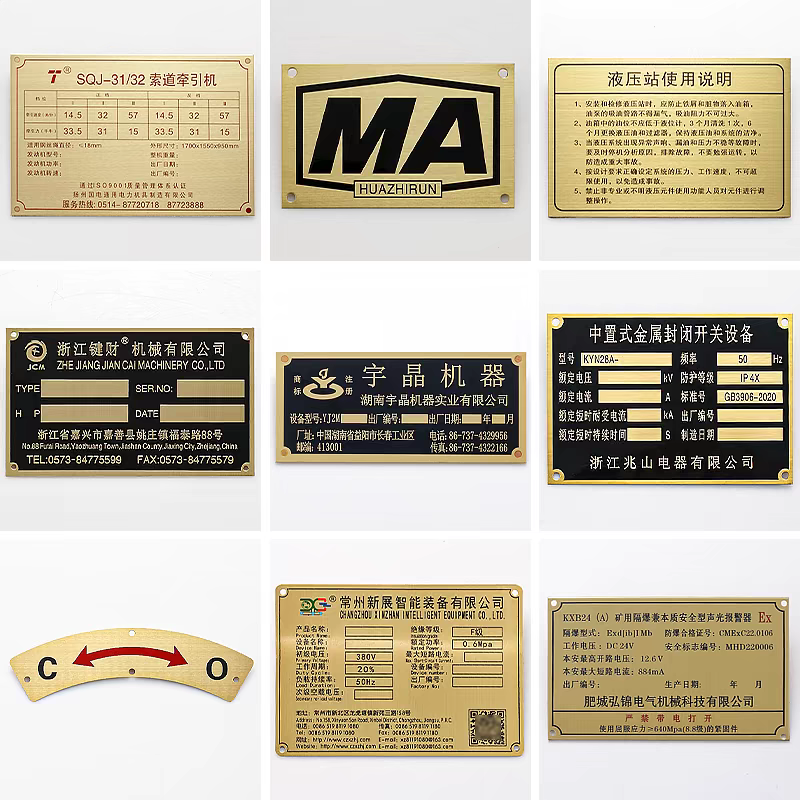
1. The Lifesaving Imperative: Why Pipework Identification Labels are Non-Negodiable
The primary and most critical function of pipework identification labels is safety. In complex environments, pipes carry substances ranging from harmless water and air to highly hazardous chemicals, flammable gases, high-pressure steam, and toxic waste. Confusion about pipe contents can have dire consequences:
Preventing Accidents: Clear labels prevent accidental contact with hazardous materials during maintenance, repair, or emergency response (e.g., cutting into a pipe believed to be water but actually containing acid or flammable gas).
Emergency Response: Firefighters, HAZMAT teams, and plant personnel rely on labels to instantly identify hazards during spills, leaks, or fires, enabling them to take appropriate protective measures and mitigation strategies.
Worker Protection: Labels inform personnel about potential hazards (toxicity, flammability, temperature, pressure) before they work on or near pipes, allowing them to use correct PPE and procedures.
Preventing Cross-Contamination: In facilities like pharmaceuticals, food processing, or hospitals, misidentification can lead to dangerous cross-contamination of product lines or utilities (e.g., steam vs. clean-in-place chemicals).
Flow Direction Clarity: Knowing the direction of flow is crucial for isolation, sampling, and understanding system operation, especially during shutdowns or emergencies. Pipework identification labels always include flow direction arrows.
Beyond safety, these labels are fundamental for:
Regulatory Compliance: Adherence to strict national and international standards (like ASME A13.1, BS 1710, ISO 20560) is legally mandated in most jurisdictions. Proper labeling is a core requirement.
Operational Efficiency: Quickly identifying pipes saves significant time during troubleshooting, maintenance, modifications, and new installations. Workers aren't left guessing or tracing lines unnecessarily.
Training & Knowledge Transfer: Standardized labels provide a visual language that helps train new personnel and preserves institutional knowledge about complex piping systems.
Asset Management: Labels are a key part of documenting and managing the vast network of pipes within a facility, linking physical assets to schematics and digital records.
2. Decoding the Standards: ASME A13.1, BS 1710, ISO 20560 and More
Effective pipework identification labels are not arbitrary; they follow rigorous, internationally recognized standards that define color schemes, text requirements, label placement, and symbol usage. The most prominent include:
ASME A13.1 (Standard for Scheme for the Identification of Piping Systems): The predominant standard in North America.
Color Coding: Defines specific base colors for major fluid categories:
Yellow with Black Text: Flammable Fluids (Oils, Fuels, Gases)
Green with White Text: Potable, Cooling, Boiler Feed & Other Water
Blue with White Text: Compressed Air
Red with White Text: Fire-Quenching Fluids (Sprinkler systems, foam)
Orange with Black Text: Toxic and Corrosive Fluids (Acids, Alkalis)
Brown with White Text: Combustible Fluids (Oils above flashpoint)
Purple with White Text: Non-Potable Water, Irrigiation, Rainwater
White with Black Text: Other categories (User-Defined, often used for Vacuum, Inert Gases)
Gray with White Text: Specific User-Defined (Common for general gases like N2, O2)
Black with White Text: Specific User-Defined (Common for Waste, Sewage)
Text Requirements: Mandates the fluid name (in full or standardized abbreviation) and directional arrows. Requires sufficient text size for legibility at a distance.
Label Placement: Specifies locations for labels (near valves, flanges, changes of direction, walls/floor penetrations, every 25-50 ft in straight runs) and visibility requirements.
BS 1710 (Specification for Identification of Pipelines and Services): Widely used in the UK, Europe, and Commonwealth countries. Uses a combination of base colors and colored bands to indicate hazard and content.
Base Colors: Indicate the main category (e.g., Water, Steam, Gases, Oils, Acids/Alkalis, Air, Fire services).
Safety Bands: Colored bands applied over the base color (or adjacent) indicate specific hazards: Yellow for Flammable, Red for Fire Quenching, Green for Safety, Blue for Protective.
Text & Symbols: Requires fluid name, flow arrows, and often incorporates specific symbols.
ISO 20560-1:2020 (Safety information for the content of piping systems and tanks — Part 1: Piping systems): An international standard aiming for greater global harmonization. It emphasizes the use of GHS pictograms alongside the fluid name and color coding.
Focuses on conveying hazard information directly via pictograms (e.g., flame, skull & crossbones, corrosion, health hazard) in addition to the fluid name and color.
Encourages a consistent approach globally.
Industry-Specific Standards: Certain sectors may have additional or modified requirements (e.g., NFPA for fire protection, pharmaceutical GMP standards).
Adherence to the relevant standard for your region and industry is paramount when selecting and applying pipework identification labels.
3. Anatomy of an Effective Label: Components and Design Principles
A compliant and functional pipework identification label consists of several key elements working together:
Color Field: The primary background color, strictly following the chosen standard (ASME, BS, ISO) to indicate the fluid category or hazard at a glance.
Fluid Name: The full name or a standardized abbreviation of the pipe's contents (e.g., "STEAM 150 PSI", "CHILLED WATER", "NITRIC ACID 20%", "COMPRESSED AIR", "DOMESTIC HOT WATER"). Clarity and conciseness are crucial. Avoid overly technical jargon unless universally understood on-site.
Directional Arrows: Clearly marked arrows indicating the direction of flow within the pipe. Double-headed arrows should be avoided unless flow genuinely reverses regularly; unidirectional flow is the norm. Arrows must be prominent and unambiguous.
Hazard Pictograms (Increasingly Important, especially under ISO 20560): GHS pictograms (e.g., flame, exploding bomb, corrosion, health hazard, exclamation mark, environment) provide instant visual recognition of specific dangers associated with the contents, supplementing the color and text. Mandatory under ISO 20560 and highly recommended elsewhere for enhanced safety.
Material Durability: Labels must withstand the environment:
Surface: Pipe material (metal, plastic), texture, cleanliness (oily, dusty).
Environment: Temperature extremes (high heat near boilers/steam lines, cryogenic cold), UV exposure (outdoors/sunlit areas), chemical exposure (splash, fumes), moisture, abrasion.
Common Materials: Industrial-grade vinyl, polyester (PET), polypropylene (PP), or even specialized high-temperature or chemical-resistant films. Adhesive must be strong and permanent (often acrylic-based).
Legibility & Size: Text and arrows must be large enough and high-contrast (e.g., white text on dark colors, black text on light colors) to be easily read from the expected viewing distance (often defined in the standard, e.g., letter height proportional to pipe diameter). Fonts should be simple, sans-serif, and bold.
Optional but Useful Elements:
Pressure/Temperature Indication (if critical).
Company/Plant Identifier.
Traceability Codes/Links to digital schematics (via QR codes).
BS 1710 Safety Bands.
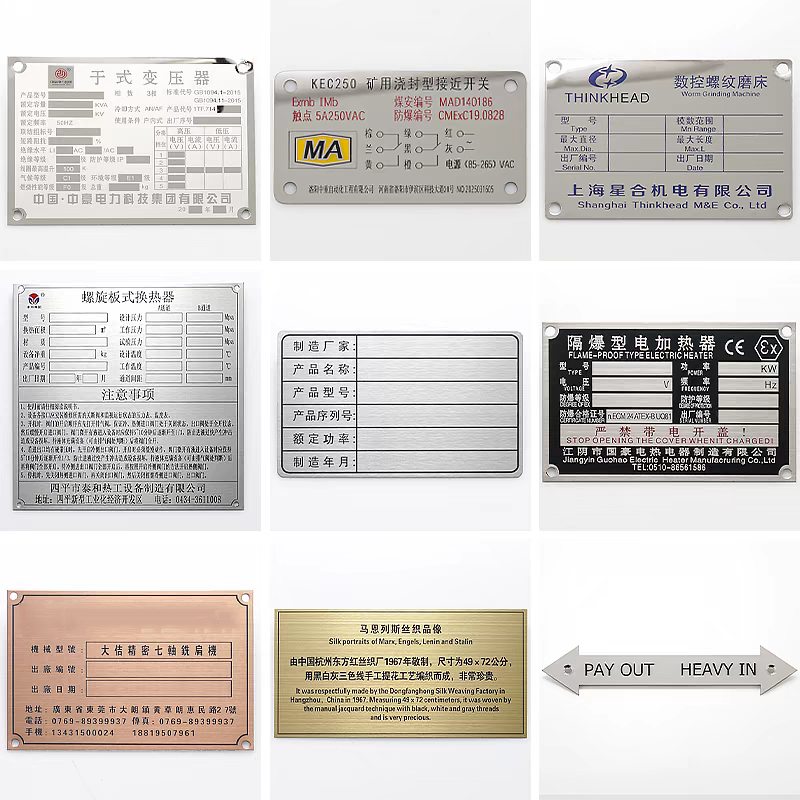
4. Choosing the Right Label: Materials, Adhesives, and Customization
Selecting the appropriate pipework identification labels is critical for longevity, compliance, and safety. Consider these factors:
Material Selection Based on Environment:
General Indoor Use (Moderate Conditions): Durable vinyl is cost-effective and performs well. Good chemical resistance options available.
Harsh Indoor/Outdoor Use (Chemical Exposure, UV, Weather): Polyester (PET) offers superior resistance to chemicals, abrasion, moisture, and UV fading. The gold standard for demanding industrial applications.
High-Temperature Pipes (Steam Lines, Exhausts): Specialty high-temperature polyester films, ceramic-based labels, or even embossed metal tags are required. Standard labels will melt or discolor.
Cryogenic Temperatures: Materials and adhesives specifically formulated for extreme cold to prevent brittleness and failure.
Chemical Immersion/Splash Zones: Polyester or specialized chemically inert films with aggressive adhesives.
Abrasive Environments: Thick polyester or polypropylene with protective overlaminates.
Adhesive Performance: The adhesive must bond permanently and reliably to the pipe surface under operating conditions.
Permanent Acrylic Adhesive: Standard for most applications.
High-Tack Adhesive: For difficult surfaces (dusty, oily, lightly textured).
High-Temperature Adhesive: Essential for hot pipes.
Surface Preparation is Key: Pipes must be clean, dry, and free of loose scale, oil, grease, and dirt for optimal adhesion. Cleaning with appropriate solvents is often necessary.
Customization Options:
Pre-Printed Standard Labels: Cost-effective for common services (Water, Air, Steam). Limited flexibility.
On-Site Printing: Using industrial label printers (thermal transfer recommended for durability) allows for complete customization of text, flow arrows, and sometimes color fields/pictograms. Ideal for unique fluids, pressures, or sites needing flexibility.
Pre-Customized Labels: Ordered from manufacturers with specific fluid names, pressures, pictograms, etc., for large-scale consistent projects. Often the most durable and professional option.
Tags and Saddle Markers: Used when pipe surfaces are unsuitable for direct adhesion (insulated pipes, very hot surfaces, irregular shapes). Attached with wire or clamps.
5. Implementation Best Practices: Where, How, and How Often to Label
Proper placement and application are as vital as the label itself:
Label Placement (Guided by Standards):
Adjacent to all valves, flanges, instruments, and changes of direction.
On both sides of wall, ceiling, or floor penetrations.
At regular intervals along straight pipe runs (ASME recommends 25-50 ft intervals or within sight of the previous label). Frequency increases with hazard level.
Near equipment connections (pumps, tanks, vessels, exchangers).
At points where pipes enter or leave a room or defined area.
Ensuring visibility from the primary access point or walkway.
Application Method:
Surface Preparation: Clean the pipe surface meticulously. Use isopropyl alcohol or recommended cleaner. Remove all contaminants. Allow to dry.
Positioning: Apply labels horizontally on vertical pipes and on the top or side (but not bottom) of horizontal pipes for maximum visibility and protection from dripping liquids. Ensure arrows point correctly with flow.
Application: Remove backing and apply smoothly, pressing firmly from the center outwards to eliminate air bubbles. Use a squeegee or roller for large labels. For curved pipes, ensure the label conforms properly without creasing.
Labeling Insulated Pipes: Labels must be placed on the outer jacket of insulation. Use tags or saddle markers secured to the jacket. Place labels at key locations (valves, penetrations) and ensure the insulation jacket itself is also color-coded according to the standard.
Maintenance & Audits: Pipework identification labels are not "install and forget."
Regularly inspect labels for damage, fading, peeling, or illegibility.
Replace damaged or missing labels immediately.
Conduct formal audits (e.g., annually) to ensure compliance with standards, verify label presence and accuracy, and update labels after system modifications.
Integrate labeling verification into routine maintenance walkdowns.
6. Industry-Specific Applications and Nuances
While the core principles remain, pipework identification labels have specific nuances across sectors:
Oil & Gas / Chemical Processing: Extreme hazards (flammables, toxics, high pressure/temperature). Demands highest durability materials (polyester/metal), strict adherence to ASME/ISO with GHS pictograms, and rigorous auditing. Color accuracy is critical.
Power Generation (Fossil & Nuclear): High-pressure steam, high temperatures, complex systems. Requires specialized high-temp labels, clear identification of feedwater, condensate, fuel lines, and critical safety systems. Nuclear has additional stringent requirements.
Pharmaceuticals & Biotechnology: Focus on preventing cross-contamination. Labels must withstand aggressive cleaning (CIP/SIP) chemicals and steam sterilization. GMP compliance dictates strict traceability and documentation of labeling systems. Often uses color coding for clean utilities (WFI, Pure Steam, Clean Air).
Food & Beverage: Similar hygiene needs to pharma. Labels must be food-safe (NSF approved materials/adhesives) and withstand washdowns. Clear identification of product lines, cleaning agents, and utilities (CO2, ammonia refrigeration) is vital.
Healthcare Facilities: Critical for identifying medical gases (Oxygen - Green/White, Vacuum - Yellow/Black, Nitrous Oxide - Blue/White, Medical Air - Yellow/White), steam, water, and waste lines. Patient safety depends on absolute accuracy and compliance with specific medical gas standards (HTM 02-01, NFPA 99).
Commercial Buildings (HVAC, Plumbing): Identification of chilled water, hot water, condenser water, compressed air, sprinkler systems, and natural gas improves maintenance efficiency and safety for technicians. ASME A13.1 is common.
Water & Wastewater Treatment: Identification of raw water, potable water, treated effluent, sludge lines, chemicals (chlorine, polymers), and process gases.
7. Beyond Compliance: The Tangible Benefits of a Robust Labeling System
Investing in a comprehensive pipework identification label system delivers significant returns beyond meeting regulations:
Enhanced Safety Culture: Visible commitment to safety improves morale and awareness. Reduces near misses and serious incidents.
Reduced Operational Risk: Minimizes the chance of operating errors, incorrect line breaking, or accidental releases.
Faster Maintenance & Repairs: Technicians quickly locate correct valves and lines, reducing troubleshooting time and downtime.
Improved Training & Onboarding: New employees learn the system faster through clear visual cues.
Accurate Documentation & Asset Management: Labels link physical pipes to P&IDs (Piping & Instrumentation Diagrams) and digital asset management systems.
Reduced Insurance Premiums: Demonstrable safety measures like proper labeling can sometimes lead to lower insurance costs.
Facilitation of Modifications & Expansions: Clear identification simplifies planning and executing system changes.
Environmental Protection: Preventing accidental releases protects the environment.
Pipework identification labels are the indispensable visual language that speaks volumes about the hidden contents within pipes. They are a fundamental pillar of industrial safety, environmental protection, regulatory compliance, and operational efficiency. Ignoring proper labeling is an unacceptable risk with potentially severe consequences. By understanding the critical standards (ASME A13.1, BS 1710, ISO 20560), selecting durable and appropriate materials, implementing best practices for placement and maintenance, and tailoring the system to specific industry needs, organizations create a safer, more efficient, and compliant working environment.
A well-executed pipework identification label system is not an expense; it's a vital investment in people, assets, and the continuity of operations. Ensure your pipes speak clearly – label them correctly.



